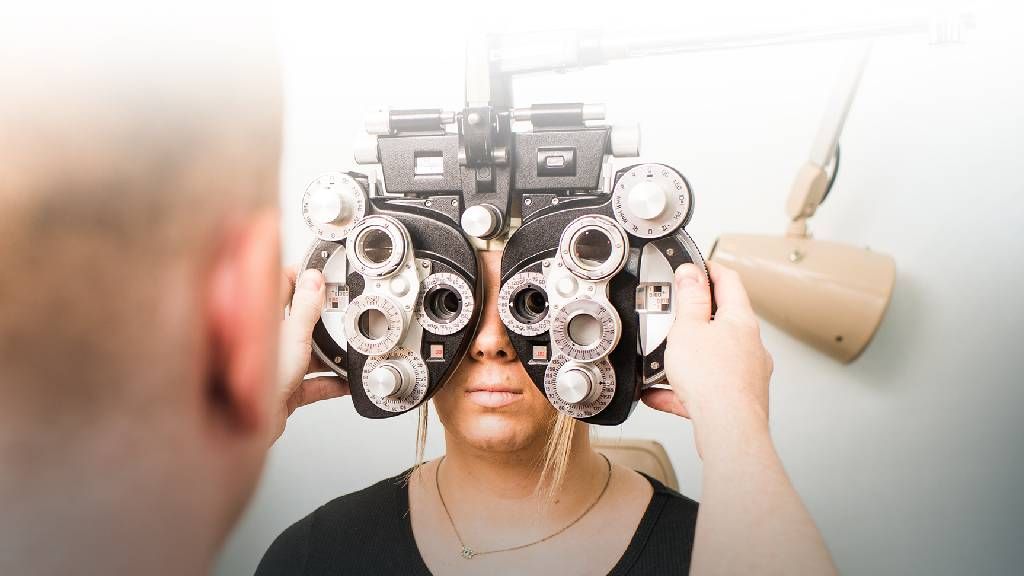Top Eye Doctors in Andalusia: Specialist Vision Look After Your Household
Top Eye Doctors in Andalusia: Specialist Vision Look After Your Household
Blog Article
Comprehending the Different Vision Adjustment Procedures Available for Clearer Sight
In the world of vision modification treatments, a plethora of choices exist to deal with refractive mistakes and give people with more clear sight. From the extensively identified LASIK surgical procedure to much less intrusive treatments like PRK and implantable lenses, the field of ophthalmology provides a series of methods customized to fit different demands and preferences. Each treatment features its own collection of factors to consider, advantages, and potential threats. Recognizing the nuances of these vision adjustment techniques is critical for making informed choices concerning one's aesthetic health and wellness. Allow's discover the details of these procedures and dropped light on the course to accomplishing boosted vision clarity.
LASIK Surgery
LASIK surgical treatment is a typical refractive procedure used to remedy vision troubles such as farsightedness, nearsightedness, and astigmatism. This surgical method, which represents Laser-Assisted sitting Keratomileusis, intends to improve the cornea to improve how light is concentrated on the retina, eventually improving vision clearness. During the treatment, a thin flap is produced on the cornea, and a laser is used to get rid of specific quantities of tissue to improve it suitably. This reshaping enables light to be accurately concentrated onto the retina, dealing with refractive mistakes.
One of the main benefits of LASIK surgical treatment is the fast renovation in vision experienced by clients. On the whole, LASIK surgical treatment is a popular selection for individuals looking for a long-term solution for their vision troubles.
PRK Treatment

PRK is an appropriate choice for people with thin corneas or those at a greater threat of eye injuries, as it does not entail creating a corneal flap. The recuperation procedure for PRK is a little longer contrasted to LASIK, as the epithelium needs time to regenerate. Individuals might experience discomfort and blurry vision for a couple of days complying with the treatment.
In spite of the longer recovery time, PRK can produce excellent cause vision enhancement, making it a valuable option for those that may not be suitable candidates for LASIK surgical treatment. - Eye Doctors in Andalusia
Implantable Lenses
In comparison to PRK where the cornea is reshaped straight, implantable lenses use an additional approach for fixing vision by inserting synthetic lenses inside the eye. This procedure is specifically valuable for individuals with high degrees of nearsightedness, farsightedness, or astigmatism that may not be appropriate candidates for laser surgeries like LASIK or PRK.
Implantable lenses, additionally referred to as phakic intraocular lenses, job by supplementing the eye's natural lens with an artificial one. These lenses can be put in front of the all-natural lens (anterior chamber) or behind the iris and before the all-natural lens (posterior chamber) By changing the power and positioning of these lenses, ophthalmologists can properly correct refractive errors and boost visual acuity.
One benefit of implantable lenses is that they are exchangeable and detachable, supplying adaptability for future changes. Nonetheless, just like any surgery, there are risks involved, such as infection or cataract development. Clients thinking about implantable lenses ought to seek advice from with an eye treatment expert to figure out the most suitable alternative based on their specific YOURURL.com demands and eye health.
Corneal Rings

The treatment for inserting corneal rings is minimally invasive and fairly quick, often executed as an outpatient see page procedure. During the surgical procedure, the eye doctor makes a tiny laceration in the cornea and inserts the rings at a certain deepness. When in position, the rings aid to reshape the cornea, giving a smoother surface area for light to go into the eye, which can result in clearer vision.
Corneal rings are taken into consideration a reversible treatment, as they can be eliminated or replaced if required. While they might not entirely get rid of the requirement for glasses or call lenses, corneal rings can considerably boost vision top quality and general visual comfort for people with keratoconus or various other corneal irregularities.
Refractive Lens Exchange
Adhering to the modification of corneal abnormalities with procedures like corneal rings, one more vision modification method that can attend to refractive errors is Refractive Lens Exchange (RLE) RLE is a medical procedure that involves changing the eye's all-natural lens with a synthetic intraocular lens (IOL) to fix refractive errors such as farsightedness, presbyopia, and nearsightedness. This treatment is specifically valuable for individuals that might not appropriate prospects for procedures like LASIK or PRK as a result of factors such as slim corneas or high refractive mistakes.
RLE is akin to cataract surgery, as both include getting rid of the eye's all-natural lens; nonetheless, in RLE, the lens is clear, not cloudy as in cataracts. The synthetic lens implanted throughout RLE can be customized to attend to the individual's certain refractive mistake, supplying clear vision at various distances. Healing time for RLE is fairly fast, and patients can anticipate enhanced vision not long after the treatment. Similar to any surgery, potential threats and problems additional hints exist, so a thorough examination with an eye treatment expert is necessary to determine if RLE is the right vision improvement option.
Conclusion

In the world of vision improvement procedures, a wide variety of alternatives exist to resolve refractive mistakes and give individuals with clearer sight.LASIK surgery is an usual refractive procedure utilized to fix vision problems such as astigmatism, nearsightedness, and farsightedness.While also an usual refractive procedure, the PRK (Photorefractive Keratectomy) technique differs from LASIK surgical treatment in its technique to fixing vision issues.Complying with the adjustment of corneal abnormalities with procedures like corneal rings, one more vision adjustment technique that can resolve refractive errors is Refractive Lens Exchange (RLE) LASIK surgical procedure, PRK treatment, implantable lenses, corneal rings, and refractive lens exchange are all choices that can attend to various vision issues.
Report this page